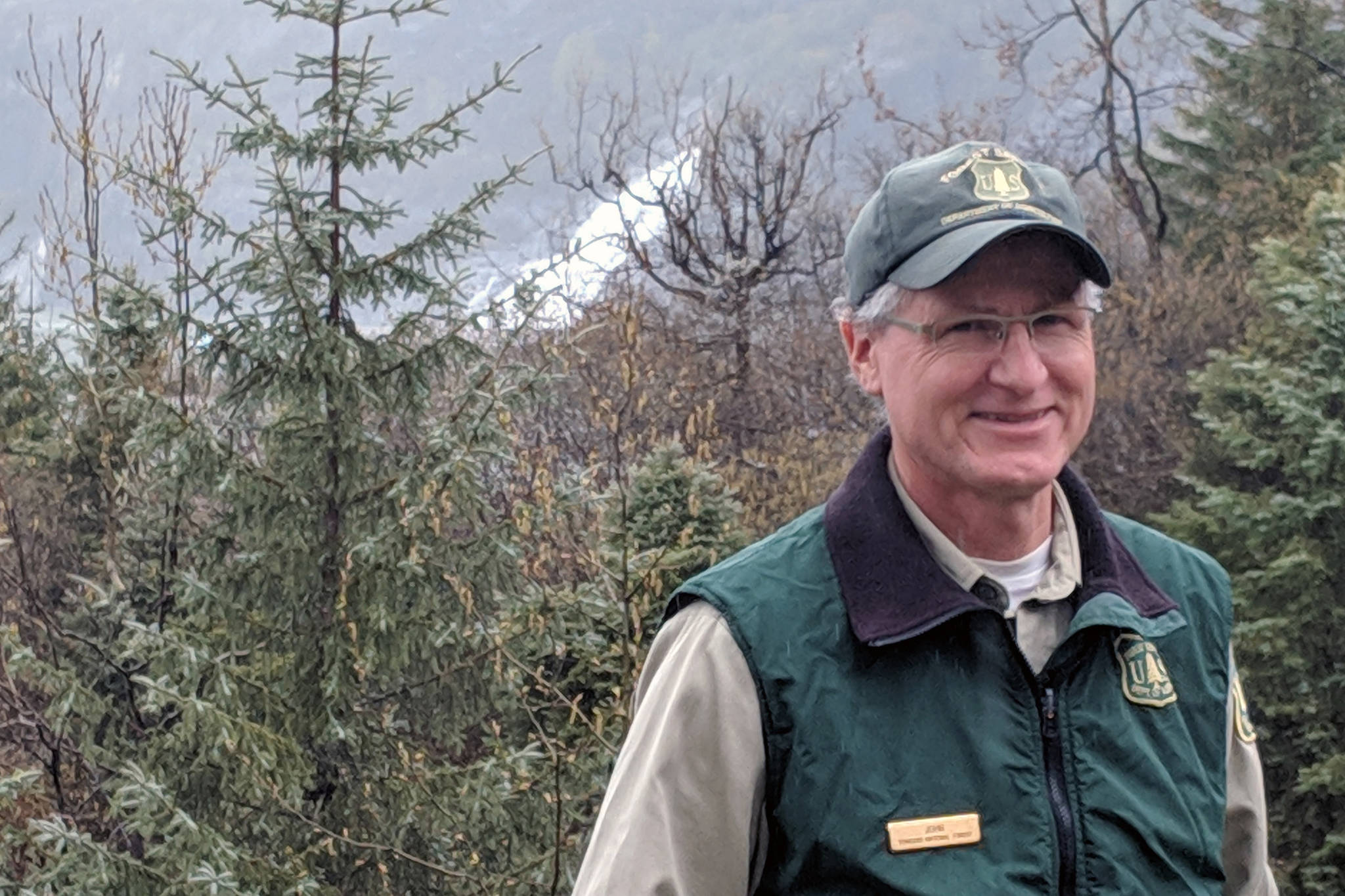John Neary’s June will be a lot like his May, but with a lot more freedom.
Neary, director of the Mendenhall Glacier Visitor Center for the U.S. Department of Agriculture Forest Service, is set to retire May 31 after 37 years of federal service.
Most of the 59-year-old Neary’s time was spent in or near Juneau, and he has held his current position for the past six years.
“I felt as if, I think I’d done my part,” Neary said during an interview. “The biggest motivation is that my wife had retired three years ago, and she wants to do various things, and I want to join her. Secondly, I’ve really enjoyed this job, and I think there’s other things out there for me, and I have not explored those things.”
He said he expects an interim director will be announced soon, and some time after that a search for a permanent director will begin.
Neary took some time on a recent Friday afternoon to talk about what and where he plans to explore, what drew him to his job and the most inexplicable bear behavior he ever saw.
The conversation has been edited for length and clarity.
What are some of the things you’re hoping to explore? I think folks like to picture what comes after that ride off into the sunset.
That ride off looks a lot like hanging out in Juneau, and really having the freedom of choice to do whatever. When you work full time, as you know, as everybody knows, you have to, regardless of the weather, go into the office, get into that meeting, do whatever that calls you. Whereas, now if the weather demands me putting my kayak in the water or climbing up to a peak, I’ll do it. If the fish are biting, I’ll go that way. It allows so much freedom that I just am hungry for.
Is there any bittersweetness since you won’t see the master plan implemented under your watch?
[Mendenhall master plan calls for major change]
Oh yes. This is what you learn in 37 years of federal service. If you’re a creative and energetic person, passionate about what you do, like I am, you learn to just put it in a bottle. Things are going to take twice as long. It’s going to be more time-consuming, more expensive than you ever thought, and that’s kind of what I did a while ago. I was hoping we would already be at the construction stage for some things at this time when I envisioned this process four or five years ago. On the flip side of that, it’s progressed reasonably well. It’s reaching a stage where it’s a positive one. It’s not at all negative. It’s just taking forever.
What drew you to federal service in the first place?
I grew up in the East. I was born in New York City and moved upstate. We had no federal lands that we ever visited as part of our lifestyle until our parents took us west and showed us all these wonderful national parks and forests. I just really fell in love with the wide-open west. I went to Colorado State University, and I got great introduction to what resource management is and wilderness management, and I just wanted to come to Alaska after that.
Do you have an all-time favorite day on the job?
To characterize a favorite day would be one in which there are multiple things going on all at once, and I need to respond quickly to them. It requires good teamwork, fast decision-making, competency and confidence in what you’re doing. Equally as much, I love the slow times. I love the midwinter beautiful light on the glacier, where the sun is so low on the horizon that it’s casting these long, orange rays that are just making the glacier glow.
Has there ever been something you’ve observed where you thought, “No one is ever going to believe what I just saw?”
I once followed a large bear all the way up the East Glacier Trail. The whole time I was standing back far enough that I was not trying to rush the bear or corral the bear. This was a large animal that typically would not show that much patience and tolerance. I was following the animal because I was concerned people walking down the East Glacier Trail might come upon this animal and there might be an incident.
At any moment, I expected it to veer off of the trail and head into the woods and be a bear, but it didn’t. Then, a group of chatty women came down, and I’m watching the bear approach them directly on the trail, but they never saw the bear. I’m trying to signal them by waving my arms, so as not to disrupt the bear, but they didn’t even look at me. This happened two other times in the course of the next 20 minutes. Then the bear, at one point, went past all those people and up at the switchbacks on East Glacier Trail decided to leave the trail, and before he left the trail, it turned around and just gave me one very long look. It was simply a long look as if to say, ‘OK, we’re done right?’
• Contact arts and culture reporter Ben Hohenstatt at (907)523-2243 or bhohenstatt@juneauempire.com. Follow him on Twitter at @BenHohenstatt.

